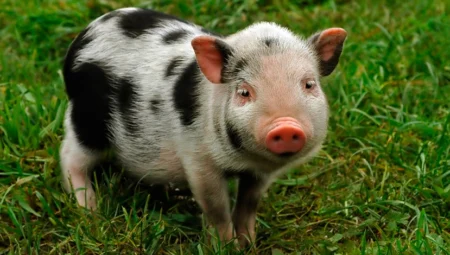New Year’s Eve celebrations often involve loud fireworks, crowded gatherings, and festivities that can be distressing and potentially dangerous for stray animals. While people are reveling in the festivities, it’s essential to consider the well-being of these vulnerable animals. Here’s a comprehensive guide on what can be done to help stray animals on New Year’s Eve:
1. Providing Shelter and Safety:
- Temporary Shelters: Create temporary shelters or safe havens in quiet areas away from firework displays. Utilize cardboard boxes, blankets, or shelters to offer a refuge for stray animals seeking safety.
- Secure Spaces: Encourage nearby businesses or homeowners to provide access to enclosed spaces like garages, sheds, or porches where animals can seek refuge from noise and potential harm.
2. Food and Water:
- Food Stations: Set up food and water stations in safe locations. Leave out easily accessible food and water to ensure strays have sustenance during the celebrations.
- Encourage Community Support: Rally support from local communities or animal welfare groups to provide food donations for strays during New Year’s Eve.
3. Identification and Monitoring:
- Identification Tags or Collars: If possible, consider placing temporary identification tags or collars with contact information on friendly strays to aid in reuniting them with owners or caretakers if they get lost.
- Monitoring and Patrolling: Organize volunteers or animal welfare organizations to monitor areas with high stray populations, offering assistance and ensuring their safety during the celebrations.
4. Spreading Awareness and Education:
- Educational Campaigns: Raise awareness among the community about the dangers of fireworks for animals. Encourage responsible celebrations and inform people about the impact of loud noises on strays’ mental well-being.
- Distribute Flyers: Distribute informational flyers in neighborhoods, urging residents to be mindful of stray animals and to take preventive measures to minimize their distress.
5. Collaborating with Local Authorities:
- Coordination with Animal Control: Collaborate with local animal control authorities or shelters to implement strategies for rescuing distressed animals or providing emergency care if needed.
- Emergency Hotlines: Establish or promote emergency hotlines for reporting lost or distressed animals, ensuring quick responses and assistance during New Year’s Eve festivities.
6. Post-Celebration Follow-Up:
- Post-Celebration Outreach: Conduct post-celebration sweeps to ensure no animals are trapped or injured due to leftover debris, fireworks, or celebratory materials.
- Rehabilitation and Care: Offer rehabilitation or medical care for animals injured or traumatized during the celebrations, collaborating with local veterinary clinics or rescue organizations.
New Year’s Eve celebrations can be stressful and perilous for stray animals due to loud noises and crowded environments. By taking proactive steps such as providing shelters, food, identification, spreading awareness, collaborating with local authorities, and offering post-celebration support, communities can ensure the safety and well-being of stray animals during this festive time. Prioritizing the needs of these vulnerable animals reflects a compassionate and responsible approach to festivities, promoting a safer environment for all creatures, especially those without homes or caretakers.

What about the shelter animals?
Shelter animals also face challenges during New Year’s Eve due to the noise and commotion caused by fireworks and celebrations. The loud noises and sudden bursts of light can induce stress and anxiety among animals already residing in shelters. Here are some ways to help shelter animals during this time:
1. Comfort and Security:
- Safe Spaces: Create secure and quiet spaces within shelters where animals can retreat to feel safe. Use soundproofing or calming music to mitigate the impact of loud noises.
- Comfort Items: Provide comforting items such as blankets, toys, or familiar bedding to offer a sense of security to shelter animals.
2. Calming Techniques:
- Calming Pheromones: Use pheromone diffusers or sprays designed for calming pets to create a tranquil atmosphere within shelter areas.
- Gentle Handling: Maintain a calm and gentle approach when handling animals, offering reassurance and comfort during periods of stress.
3. Distraction and Engagement:
- Enrichment Activities: Engage animals in enrichment activities or puzzles to divert their attention from the noise outside and keep them mentally stimulated.
- Play and Interaction: Encourage play sessions or interactions with shelter staff or volunteers to alleviate stress and anxiety in animals.
4. Precautionary Measures:
- Secure Enclosures: Ensure enclosures or kennels are properly secured to prevent animals from escaping due to fear or panic caused by fireworks.
- Identification and Monitoring: Ensure all animals are properly identified with tags or microchips. Increase monitoring and supervision during New Year’s Eve to prevent accidents or escape attempts.
5. Post-Celebration Care:
- Post-Celebration Assessment: Conduct post-celebration checks to assess the well-being of shelter animals. Address any signs of distress or injuries promptly.
- Rehabilitation and Support: Offer rehabilitation or medical care to animals that exhibit signs of stress or trauma following the celebrations.
6. Collaboration and Promotion:
- Collaboration with Communities: Collaborate with local communities to spread awareness about the impact of fireworks on shelter animals and encourage responsible celebrations.
- Promote Adoption and Fostering: Use this time to promote adoption or fostering of shelter animals, emphasizing the need for a calm and safe environment for pets during celebrations.
During New Year’s Eve celebrations, shelters play a crucial role in ensuring the well-being of animals in their care. By implementing measures to create a calm and secure environment, offering comfort and engagement, taking precautionary steps, and providing post-celebration care, shelters can minimize the stress and anxiety experienced by animals. It’s essential to prioritize the safety and mental health of shelter animals during this time and promote a compassionate and caring approach to their welfare.




